Table of Contents
Cells Structure and Functions:
Cell Theory:
In 1665, an English scientist Robert Hooke examined very thin slices of the bottle cork (a dead plant material derived from he bark of a tree) under his newly made microscope and discovered that this material had the structure of a honeycomb and was composed of numerous tiny compartments or chambers. He named each compartment as a cell. Later, two German scientists Mathias Jacob Schleiden and Theodor Schwann (1838) proposed a cell theory according to which-
- All plants and animals are composed of cells. The cell is the structural and functional unit of living things.
- All cells arise from the pre-existing cells.
Since then, there has been a tremendous increase in our knowledge of the cell, especially after the invention of electron microscope which made it possible to know the structure and functions of the cells in details.
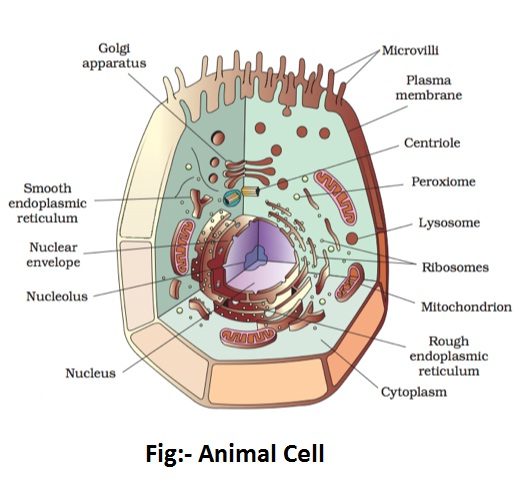
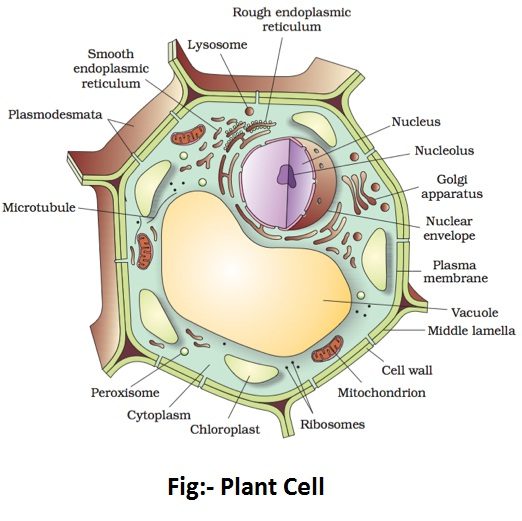
Structure of Cells:
Cells vary in size, shape and contents. Each type of cell is specific in its function or functions. The essential part of the cell is a more or less granular matter named, Protoplasm. It is a viscous translucent, jelly-like substance that imparts life to plants and animals. All the properties of life are due to the presence of protoplasm in the cells of living beings. For simplicity and convenience, we may consider the cell formed of three main parts- cell membrane, cytoplasm, Nucleus.
Cell Membrane:
The cell is bound by a thin, delicate and elastic covering called the cell membrane or plasma membrane. The cell membrane controls the movements of materials from cell to cell or from cell to the exterior and vice versa. Besides providing protection to the internal structures, it imparts mechanical strength and shape to the cell. It also helps in maintaining the internal environment of the cell in the desired state. In plant cells, the cell membrane lies inside the cell wall which forms the outer covering. The cell wall is more or less rigid and formed of cellulose. It is protective and responsible for maintaining the shape of the cell. The cell wall is permeable only to certain substances.
Cytoplasm:
It is the general mass of protoplasm which fills almost the whole of the interior of cell inside the cell membrane. It contains a number of small particles and bodies suspended in it. Some of these are the active sites of the physiological activities of the cell. They are called cell organelles. Other cell inclusions are sugars, glycogen, starch, fat globules, secretions and many other organic and inorganic substances. The cytoplasm also contains one or more vacuoles which are usually small and few in animal cells but large and many in plant cells. Each vacuole is a bubble-like sac which is bounded by a delicate membrane called tonoplast and contains a watery fluid called sap. The sap is formed of water and variety of dissolved substances.
Mitochondria, Endoplasmic Reticulum, Plastids (only in plant cells), Golgi apparatus (only in animal cells) and centrosomes (mostly in animal cells) are the important organelles present in cytoplasm.
- Mitochondria- These are very small rod-shaped, fibre-like, granular or globular bodies distributed in cytoplasm in large numbers. Mitochondria are the seats of cellular respiration.
- Endoplasmic Reticulum- It is a network of intercommunicating fluid filled canals found in the space between the cell membrane and the nuclear membrane. It facilitates the transport of materials from one part of the cell to another. It also behaves as a supporting framework for maintaining the form of the cell. Endoplasmic reticulum is of two types- smooth (free of ribosomes); rough (with ribosomes on its surface).
- Plastids- These may be regarded as pigment containing bodies which occur, almost exclusively in plant cells. Plastids are of three types- Chloroplasts (green in colour), Leucoplasts (colourless), Chromoplasts (colour other than green-red, yellow). Chloroplasts carry on photosynthesis, leucoplasts play role in the storage of food and chromoplasts give colours to flowers, fruits and seeds.
- Golgi Apparatus- The cytoplasm contains small groups of fine sacs called Golgi apparatus (in animal cells) or the dictyosomes (in some plant cells). Their function is believed to be associated with the process of secretion.
- Centrosome- This is mostly found in animal cells. It consists of two minute dark bodies called centrioles surrounded by a small mass of dense homogeneous cytoplasm called centrosphere. Centrosome plays important role during cell division.
Nucleus:
Nucleus of the cell is usually a round or oval body embedded in the cytoplasm. It is surrounded by a definite wall called the nuclear membrane.
The protoplasm forming the nucleus is called nucleoplasm. The nucleoplasm contains most important structures called chromatins. The chromatin is formed of deoxyribonucleoprotein, a combination of DNA and protein. During the cell division, the chromatin threads, present as a confused network, change into short, thick, rod-like bodies called chromosomes. A cell of a species always contains a fixed number of chromosomes. For instance, the cells of human body contain 46 chromosomes. This number is 48 in the cells of potato, 16 in the cells of onion and so on. The chromosomes contain linearly arranged genes, which are the bearers of hereditary characters. The nucleoplasm also contains one or more spherical bodies referred to as nucleolus. Chemically, a nucleolus consists largely of ribonucleoprotein which is a combination of RNA and protein.





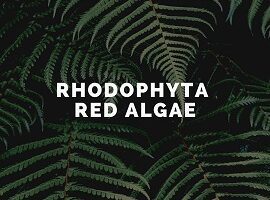
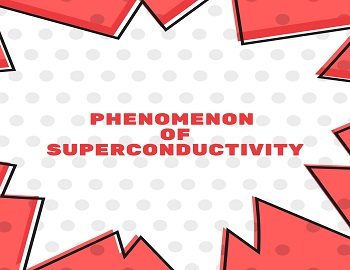
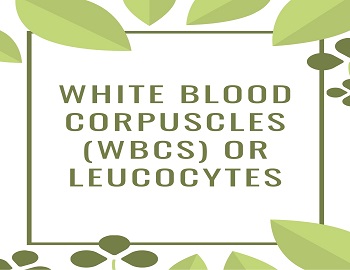
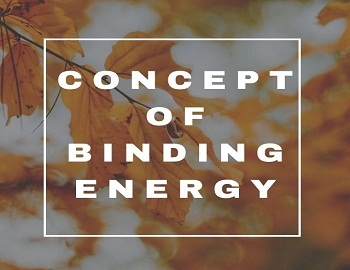
Comments (No)